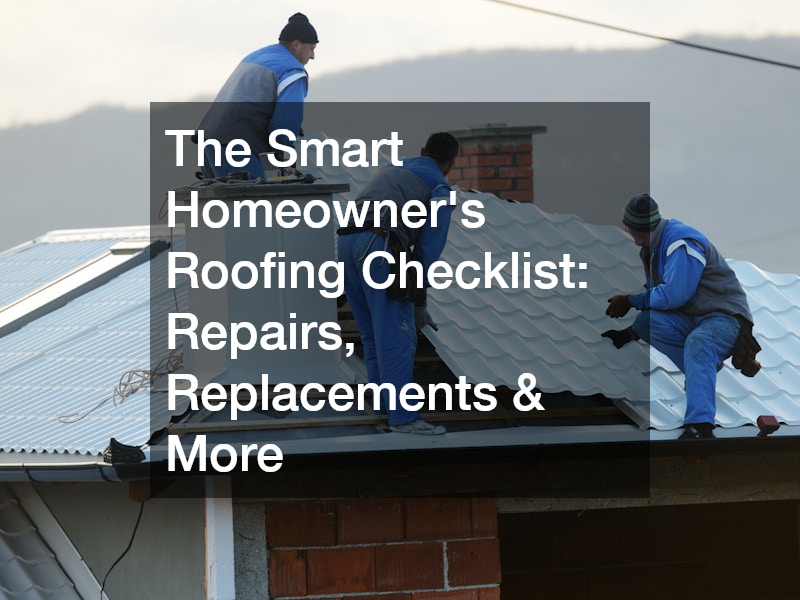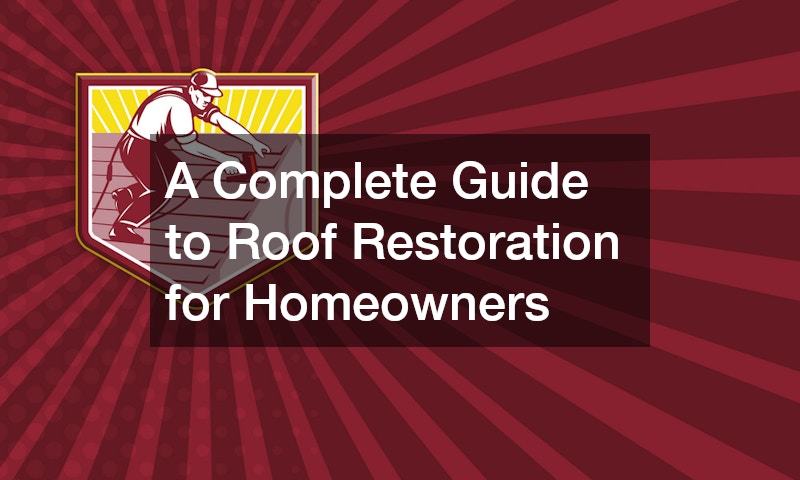The roof of a house is more than just a structural necessity; it is a critical component that provides protection, insulation, and aesthetic value to your home. While it is an essential part of any building, it often goes unnoticed until issues begin to surface. Homeowners may not always understand the intricacies involved in maintaining and eventually replacing a roof, but the importance of informed decisions cannot be overstated. As the years go by, natural wear and tear could lead to numerous problems if not addressed properly. Ignoring these issues might have dire consequences not just in terms of expenses but also for the safety and comfort of the house’s occupants. Understanding the process, the signs that indicate roofing problems, and the options available to address these issues is crucial for anyone who owns a home. This comprehensive guide seeks to provide valuable insights into why replacing old roofs is more significant than most people realize.

Why Replacing Old Roofs Matters More Than You Think
Replacing old roofs is a vital component of home maintenance that can affect the overall integrity and value of your property. The roof is a primary defensive barrier against environmental elements such as rain, wind, and sun. Over time, exposure to these elements can lead to deteriorations that compromise the structure’s safety and efficiency.
Old roofs can increase your energy bills without you even realizing it. Aged and damaged roofs often lack sufficient insulation, leading to warmth escaping during the winter and cold air seeping out in summer. An inefficient roof can drain resources and spikes in utility costs without delivering adequate comfort.
Replacing or repairing your roof is not only a better option in the long-term economic aspect, but also essential for the safety of your family. Weak spots in old roofs can allow mold and mildew growth or even become structural hazards if left unchecked. Each of these problems brings its unique set of health and safety risks that substantially degrade your quality of life.
Warning Signs Your Roof Is Nearing the End
It’s crucial to know the symptoms of a failing roof so that effective action can be taken promptly. One of the most apparent signs is shingle damage. Warped, cracked, or missing shingles significantly compromise the roof’s ability to shed water and protect against the elements.
Another critical warning signal includes dark streaks or stains on the ceiling or attic. These marks are often indicators of moisture entering the home through the roof membrane. If left unchecked, this can progress into substantial leaks or water damage, necessitating extensive roofing services.
The presence of moss or algae, while seemingly harmless, can indicate that the shingles are retaining moisture. Over time, this can lead to a breakdown of materials, impacting the structural integrity of the roof. Regular inspections and proactive maintenance are essential to prevent the transition from minor repair needs to complete roof replacements.

Roof Repair VS. Roof Replacement – How to Decide
When it comes to maintaining old roofs, homeowners often face the dilemma between opting for roof repair services or complete roof replacement. Small-scale damages such as isolated leaks or minor shingle loss might only necessitate roof repair service, especially if the rest of the roof is in good condition.
However, if a roof is reaching the end of its natural life span, the necessity for frequent repairs might be a sign that a complete replacement is more fiscally responsible over time. Constant patch jobs can add up quickly, eclipsing the cost of a new roof installation.
Ultimately, the decision often comes down to a cost-benefit analysis. Consulting with professional roofing services can help evaluate the condition of the roof and offer recommendations tailored to the specific circumstances of your property.
What to Expect from a Professional Roof Replacement
Investing in a professional roof replacement offers a level of assurance that only experts can provide. After thorough inspection and assessment, professionals will usually begin by removing the old roof. This process involves not only tearing off the existing shingles but also dealing with underlying structures that may be compromised.
Technicians will then evaluate the underbelly of the roof for damage or rot that would undermine the new roof’s performance. Should issues be identified, solutions such as replacing damaged boards are implemented to ensure a sound base for the new roof.
The installation of the new roof follows, which might include improved technologies and materials offering better efficiency and longevity. The finished product not only enhances curb appeal but also significantly updates the functionality of your home’s protective old roof barrier.

The Role of Residential Roofing Contractors in Roof Replacement
Residential roofing contractors play an integral role in the roof replacement process, offering expertise and resources that ensure a smooth, successful transition from old roofs to new. Certified residential roofers are experienced in identifying issues that may not be obvious to the untrained eye, helping to avoid future complications after the work is completed.
Moreover, these experts often have access to premium materials and employ advanced techniques that maximize the longevity and efficiency of new roof installations. By choosing experienced residential roofing services, homeowners receive quality assurance and peace of mind knowing that the job follows the highest industry standards.
Not only do these experts coordinate the logistics of the project seamlessly, but they also ensure all safety protocols are maintained, protecting the workers, homeowners, and property. Their role is crucial from the initial inspection through to the final cleanup, facilitating a stress-free experience for the homeowners.
Why More Homeowners Are Choosing Metal Roofing
Metal roofing services have become increasingly popular, with many homeowners opting for this material during roof replacement processes. Metal is not only durable and long-lasting, typically far outlasting traditional shingle alternatives, but also it’s resistant to fire, wind, and rot. These attributes make it an excellent choice for replacing old roofs.
Another significant advantage of metal roofing is its energy efficiency. It reflects solar heat effectively, which can reduce cooling costs during warm months, a desirable trait for homeowners looking to cut utility bills and increase energy conservation.
Importantly, metal roofing is also more environmentally friendly than some traditional roofing materials. Because it is often made from recycled materials and is entirely recyclable at the end of its lifespan, it lessens environmental impacts, a selling point for eco-conscious consumers working with metal roofing contractors.

How to Find Reliable Roofing Services Near You
In your quest to replace old roofs effectively, finding reliable roofing services can make all the difference. Start by conducting thorough research to identify contractors with excellent reputations and solid track records. Checking online reviews and seeking recommendations from friends or community forums can offer invaluable insights.
Next, ensure that prospective contractors are fully licensed and insured. This provides an added layer of security, knowing they meet legal standards and can handle any unforeseen incidents or damages during the project.
Finally, request and compare multiple quotes to gauge pricing for the desired roofing services. While cost is an essential factor, prioritize quality and experience to ensure the optimal outcome for your new or repaired roof.
Working with Local Roof Installation Experts
Hiring local roof installation experts has distinct advantages, providing personalized service and supporting local economies. These professionals are often more familiar with local climate conditions and common roofing issues endemic to the area, allowing them to tailor solutions to your specific needs related to old roofs.
Additionally, local experts typically offer more direct communication, ensuring clarity throughout every stage of the roof replacement process. Their proximity often means quicker response times for scheduled interventions or any emergencies that arise during or after the installation.
Furthermore, local professionals rely heavily on word-of-mouth referrals and community reputation, which encourages them to maintain high service standards. This accountability makes them highly trustworthy partners in safeguarding one of your most significant home investments.
Questions to Ask Your Roofer Before Replacing Your Roof
For those considering replacing their old roofs, preparing questions for your roofer can enhance the decisiveness and clarity of your project. Start by clarifying the timeline of the project; inquire about the expected start and completion dates to ensure that the schedule aligns with your needs.
Next, ask about the guarantees or warranties that accompany their work. This ensures that you understand what aspects of your roof are covered and for how long, providing peace of mind for future performance concerns.
Additionally, discussing the potential costs and payment options upfront is vital. Understanding potential financial commitments helps in planning and assessing the feasibility of your desired roofing services within your budget constraints.
Making the Investment: Long-Term Value of a New Roof
Investing in a new roof can seem daunting due to the upfront costs, but the long-term benefits often outweigh these initial expenditures. New roofs do not just improve the external appearance of your home; they also bolster energy efficiency, potentially leading to reduced heating and cooling costs over time.
Moreover, a new roof increases safety and durability, diminishing the risk of leaks or structural failures that could lead to costly repairs or deteriorating living conditions. New installations significantly reduce the hidden perils often lurking in old roofs.
Finally, having a new roof can notably enhance your property’s value. Whether you are planning to sell or just future-proofing your estate, a modern, efficient roof can be a highly attractive feature to potential buyers, effectively increasing your returns on investment.
In conclusion, replacing an old roof is far more than a cosmetic upgrade—it’s a strategic, long-term investment in your property’s value, safety, and overall performance. While a new roof undeniably enhances a home’s visual appeal, the more compelling reasons to pursue a roof replacement lie beneath the surface. A deteriorating roof can compromise structural integrity, lead to water damage, and reduce energy efficiency. Proactively addressing roofing issues before they escalate is a smart approach that protects both your financial and personal well-being.
Throughout this article, we’ve examined the key considerations when dealing with aging roofs, including how to determine whether a roof is due for repairs or a complete replacement. Making this distinction is crucial. While minor issues like a few missing shingles or a small leak may warrant simple repairs, more extensive wear, especially if your roof is nearing or has surpassed its expected lifespan, may indicate that a full replacement is the more cost-effective and secure option. Ignoring these signs or delaying action can result in higher repair costs down the line, potential interior damage, and even health concerns due to mold or mildew caused by hidden leaks.
Whether you’re motivated by a desire to increase your home’s resale value, enhance energy efficiency, or simply provide better protection against the elements, your decision to invest in a new roof should be made with clarity and purpose. Partnering with trusted residential roofing contractors is a critical part of the process. These professionals bring the expertise needed to assess your roof’s condition, recommend suitable materials, and ensure that the installation is performed correctly and up to code.
One increasingly popular option among homeowners is metal roofing, valued for its durability, low maintenance, and energy efficiency. Modern metal roofs can last 40 to 70 years, resist extreme weather, and reflect solar heat, helping to lower cooling costs in warmer climates. Of course, other high-quality materials like architectural shingles and composite roofing also offer excellent performance, depending on your home’s needs and aesthetic preferences.
By taking a proactive approach and selecting both the right materials and the right roofing professionals, you can ensure that your roof will not only stand the test of time but also provide lasting benefits. From improving your home’s insulation to preventing costly water intrusion, a well-installed roof does much more than sit atop your house—it actively contributes to the comfort, safety, and efficiency of your entire living space.
Armed with this knowledge and a clear sense of what to look for, you are now better prepared to engage in meaningful conversations with local roofing experts. Asking the right questions, understanding your options, and planning with the future in mind will empower you to make choices that align with both your short-term goals and long-term property value.
Ultimately, the true value of a properly maintained and professionally replaced roof lies not just in its cost but in the peace of mind, protection, and enduring quality it delivers for years to come.





